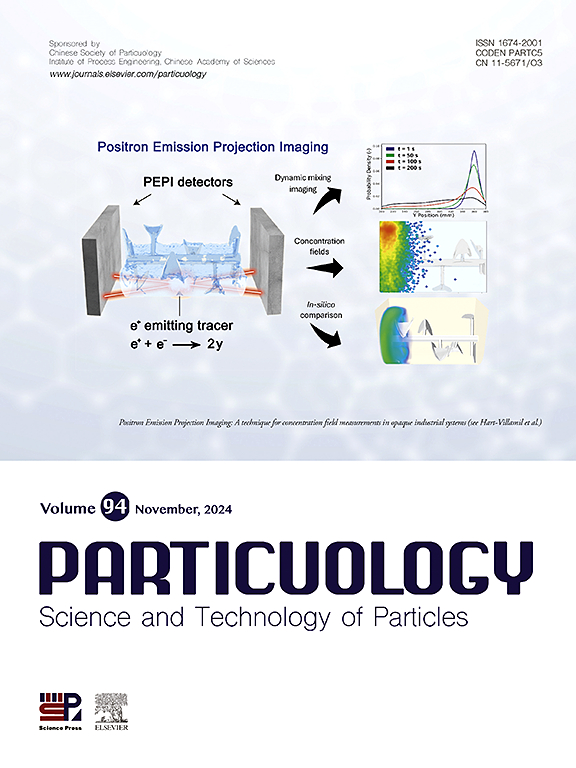提高可持续锂离子电池无钴层状正极材料结构完整性的策略
IF 4.1
2区 材料科学
Q2 ENGINEERING, CHEMICAL
引用次数: 0
摘要
近年来,钴已成为锂离子电池产业生产链中的关键限制因素。电动汽车需求的不断增长,使得锂离子电池对钴的依赖成为环境可持续性的重大挑战。为了解决这个问题,一种新的无钴材料被引入,称为锂铁铝镍氧化物(NFA)阴极材料,其通式为Li(Ni0.8Fe0.1Al0.1)1- xm1.5 xo2 (x = 0,0.005, 0.01, 0.015)。本研究通过溶胶-凝胶法合成了一系列无钴材料,并对其镁含量的变化进行了研究。电化学性能评价表明,Mg2+的掺杂显著改善了材料的电化学性能。其中,掺杂1.5 mol% Mg2+(即x值为0.01)制备的样品表现出最好的循环能力。在0.1C下循环100次后,容量保持率为80.71%,比容量为151.39 mAh g−1,具有良好的倍率性能和循环稳定性。虽然仍处于研究的初级阶段,但这些阴极有可能成为下一代无钴锂离子电池的候选材料。本文章由计算机程序翻译,如有差异,请以英文原文为准。

Strategy on improving structural integrity of cobalt-free layered cathode material for sustainable lithium-ion batteries
In recent years, cobalt has emerged as a critical limiting factor in the production chain of the lithium-ion battery industry. The increasing demand for electric vehicles has made the dependence on cobalt in lithium-ion batteries a significant challenge for environmental sustainability. To address the problem, a new class of cobalt-free materials has been introduced, called lithium iron aluminium nickel oxides (NFA) cathode materials, with the general formula Li(Ni0.8Fe0.1Al0.1)1-xMg1.5xO2 (x = 0, 0.005, 0.01, 0.015). In this work, a series of cobalt-free materials were synthesized via sol-gel processes, and variations in magnesium content were explored to investigate their compositional landscape. Electrochemical performance evaluations revealed that Mg2+ doping significantly improved the electrochemical properties of the material. Among them, samples prepared with 1.5 mol% Mg2+ doping (i.e. the value of 0.01 for x) exhibited the best cycling capacity. After 100 cycles at 0.1C, the capacity retention rate was found to be 80.71 %, with a specific capacity of 151.39 mAh g−1, demonstrating remarkable rate capability and cycling stability. Although still in the nascent stages of the investigation, these cathodes hold potential as candidates for the next generation of cobalt-free lithium-ion batteries.
求助全文
通过发布文献求助,成功后即可免费获取论文全文。
去求助
来源期刊

Particuology
工程技术-材料科学:综合
CiteScore
6.70
自引率
2.90%
发文量
1730
审稿时长
32 days
期刊介绍:
The word ‘particuology’ was coined to parallel the discipline for the science and technology of particles.
Particuology is an interdisciplinary journal that publishes frontier research articles and critical reviews on the discovery, formulation and engineering of particulate materials, processes and systems. It especially welcomes contributions utilising advanced theoretical, modelling and measurement methods to enable the discovery and creation of new particulate materials, and the manufacturing of functional particulate-based products, such as sensors.
Papers are handled by Thematic Editors who oversee contributions from specific subject fields. These fields are classified into: Particle Synthesis and Modification; Particle Characterization and Measurement; Granular Systems and Bulk Solids Technology; Fluidization and Particle-Fluid Systems; Aerosols; and Applications of Particle Technology.
Key topics concerning the creation and processing of particulates include:
-Modelling and simulation of particle formation, collective behaviour of particles and systems for particle production over a broad spectrum of length scales
-Mining of experimental data for particle synthesis and surface properties to facilitate the creation of new materials and processes
-Particle design and preparation including controlled response and sensing functionalities in formation, delivery systems and biological systems, etc.
-Experimental and computational methods for visualization and analysis of particulate system.
These topics are broadly relevant to the production of materials, pharmaceuticals and food, and to the conversion of energy resources to fuels and protection of the environment.
 求助内容:
求助内容: 应助结果提醒方式:
应助结果提醒方式:


